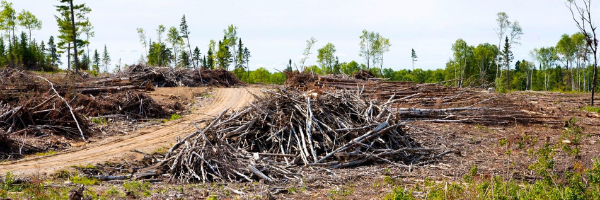
Read our Wildlands submissions on:
- The proposed changes to the CFSA
- The proposed Draft Forest Sector Strategy
- The proposed forestry EAA exemption
- The proposed revisions to the Forest Manuals
- The proposed revisions to Ontario’s Independent Forest Audit Regulation
If your head is spinning from the pace of all the disjointed forestry proposals Ontario recently posted for public comment, then you are not alone. We’re feeling it here too at Wildlands League. In total six proposals were posted in December with three separate deadlines for public comments including one that just ended on January 20.
The first one, posted on December 4, 2019, was Ontario’s Forest Sector Strategy (Draft) (ERO number: 019-0880). The deadline for public comment is February 5, 2020. This draft strategy is a high-level document purported to “unleash the potential” of the forest industry consistent with the stated priorities of the Ford government to “reduce red tape”, create “prosperity” and ensure Ontario is “open for business”.
MNRF posted five additional proposals on December 20 (the Friday immediately before the Christmas break). These proposals relate to implementing the policy directions contained in the draft strategy. In other words, it appears MNRF is moving ahead to consult on implementation of the draft strategy, without waiting for all comments to be received, without considering those comments, and without giving public notice of implementation (all of which are required by law).
This leaves us with a bad taste about the sincerity of the whole exercise.
The five proposals are not insignificant. They cover endangered species, environmental assessment, independent forest audits, pests and forest manuals. Together they appear to be removing key environmental safeguards to accelerate logging in the province. The first two are particularly irresponsible in a biodiversity crisis and climate emergency: permanent exemptions for the industry from both the Endangered Species Act and the Environmental Assessment Act. Ontario argues these are necessary to get rid of regulatory duplication. We’re not buying it.
Perhaps the public isn’t the target audience after all. While Ontario manages millions of hectares of public forests on all our behalf, when we look closer at who’s perspective they meaningfully sought in the last year, we learn:
…from November 2018 to May 2019, the government held seven round-table sessions across the province to gather insight from industry, municipal and Indigenous leaders. Feedback from the public and stakeholders was also collected through an online survey and via mail/email.
Industry has been engaged throughout the development of the strategy to ensure the current gaps and issues in the sector were considered and addressed. In August 2019, two meetings were held with industry stakeholders. A draft document was provided to industry representatives for feedback, which has been incorporated.
Select industry leaders were invited to meetings, the public was not. The public was directed to an email address. Select industry leaders also got a preview of the strategy. The public did not. We had to wait for the public posting.
From what we can tell, Ontario seems to be pinning its biggest hope on so called unused wood supply:
The volume of timber harvested today is less than 60% of what it was in 2000 – there is about 15 million m³ of available wood supply which could support further investment in the forest sector and allow Ontario to capitalize on future markets without impact the sustainability of our forests.
No data or evidence are provided to support the assertion that 15 million m3 of wood volume is actually available or that it could all be allocated without impacting the sustainability of Ontario’s forests. We know the MNRF has a history of over-allocating the forest and Forest Resource Inventory (a digital representation of the forest) is notoriously inaccurate.
For recent examples of the poor quality of the data Ontario relies on for decision making see section 2.8 in Boreal Logging Scars. To see how future timber availability will be constrained by the loss of productive forests due to full tree harvesting (FTH) the predominant approach to clearcut logging in the province please see section 3.5 in same report.
We also know that threatened and endangered wildlife that overlap with forestry operations are declining and that the industry has failed since 2008 to modify their operations to help protect and recover them. And what about climate? Continuing to log intact forests actually costs the atmosphere at a time we can least afford it. Recent research shows by 2030, the loss of productive forest in Ontario due to FTH is on track to cost the atmosphere 41 Mt CO2 equivalent in foregone carbon removals, more than a year of emissions from all the passenger vehicles in Canada.
Our fears about the strategy turning into a massive timber giveaway exercise have not been allayed by the strategy itself or the five postings that came after it. In fact, the more we read the more alarmed we become.
Moreover, the whole approach seems counter to the intention of Ontario to expand markets for its wood products “to meet current and future environmentally-conscious consumer choices” (see p. 10 in the Strategy). Environmentally-conscious consumers are not going to want products sourced from controversial areas and at the expense of at-risk species or a safe climate. Read more here.
Wildlands League is deeply concerned by the direction of Ontario on the care and oversight of public forests. Open for business is short-sighted and will ultimately put Ontario at odds with the environmentally conscious consumers it seeks and everyone who relies on the resilience and health of our precious public forests today and in the decades to come.
To take action, please go here.

